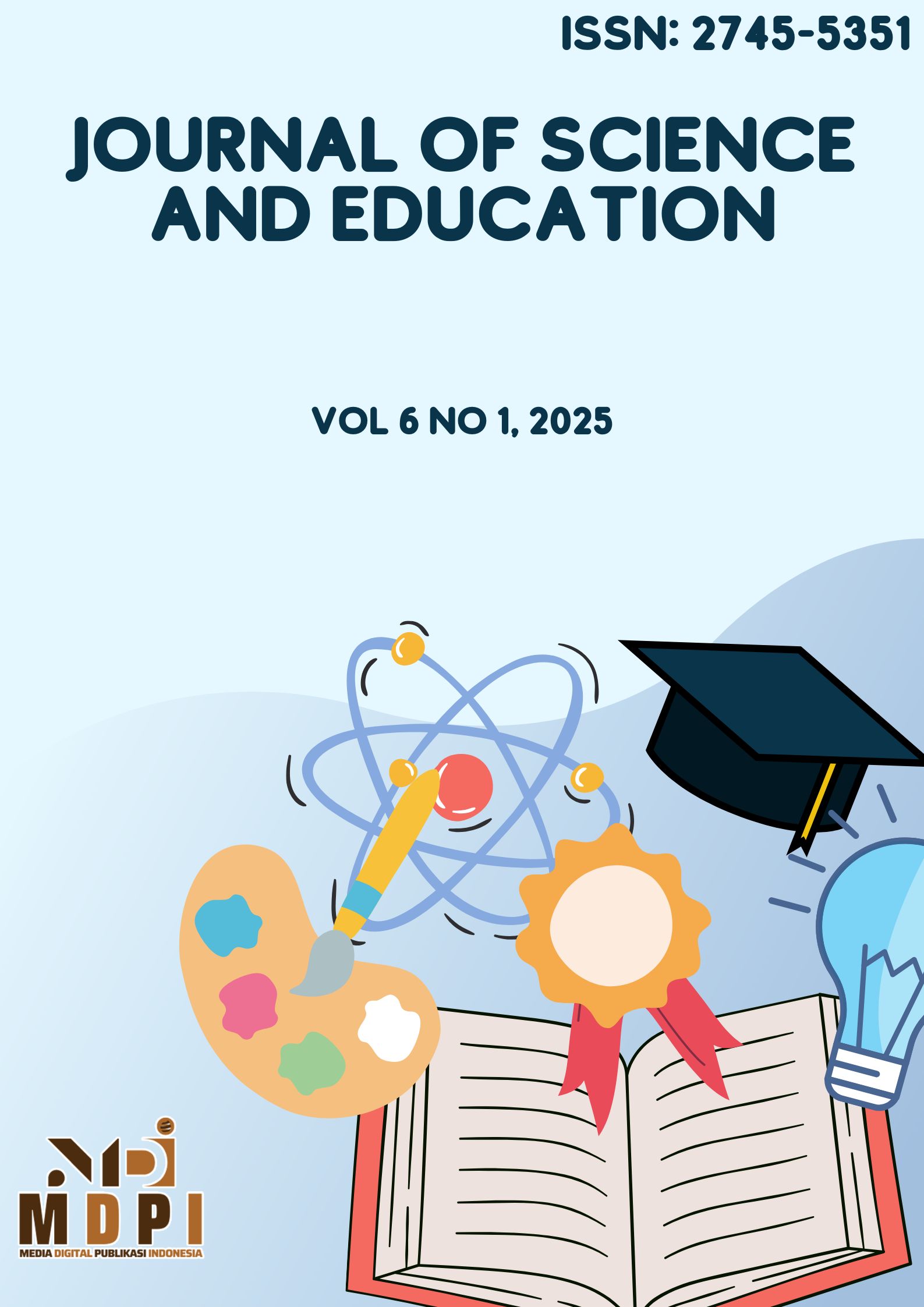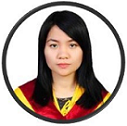Evaluation of the E-Report System at State Junior High School in Sidemen District, Karangasem Regency
DOI:
https://doi.org/10.58905/jse.v6i1.598Keywords:
CIPP, E-rapor System, Program EvaluationAbstract
The purpose of this research is to find out separately or together the components of context, input, process, product and obstacles that occur in the implementation of the E-rapor system at Public Junior High Schools in Sidemen District, Karangasem Regency. This research uses the CIPP model. The population of the study was 102 people, consisting of all teachers in four public junior high schools in Sidemen District, namely Public Junior High School 1 Sidemen, Public Junior High School 2 Sidemen, Public Junior High School 3 Sidemen and Public Junior High School Satu Atap Sangkan Gunung. The sample in this study was 94 teachers. Data on each variable in this study were obtained through a questionnaire referring to a Likert scale of 1-4. This study uses a quantitative descriptive analysis method. The effectiveness of the E-rapor system is determined by changing the raw score into a Z-score, then transformed into a T-score and verified into the Glickman Quadrant. The results of data processing show 1) The effectiveness of the implementation of the E-rapor system in terms of context ∑ (+) > ∑ (-) resulting in + (effective); 2) The effectiveness of the implementation of the E-rapor system in terms of input ∑ (+) > ∑ (-) resulting in + (effective); 3) The effectiveness of the implementation of the E-rapor system is reviewed from the process ∑ (+) > ∑ (-) so that it produces + (effective); 4) The effectiveness of the implementation of the E-rapor system is reviewed from the product ∑ (-) > ∑ (+) so that it produces - (ineffective); 5) The results of the joint data analysis on the implementation of the E-rapor system obtained effective results (+ + + -). The obstacles accurrent in the implementation of E-rapor system program managers who were not from the school where the teaches or are still on honorary staff, limited educator capabilities, limited budget, lack of socialization of E-rapor system guidelines, and limited server capacity for users in the E-rapor system.
Downloads
References
R. Firdausi, B. Mardikawati, N. Huda, R. Riztya, and S. F. Rahmani, “Peningkatan Lit-erasi Digital Dikalangan Pelajar: Pengenalan dan Praktek Penggunaan Teknologi Pen-didikan dalam Komunikasi,” no. 5, 2023.
A. Erianda, D. Prayama, and F. Rozi, “Pelatihan Pengelolaan Media Digital sebagai Media Promosi dan Penjualan pada Kampung Manggis Kecamatan Pauh Kota Pa-dang,” Jiptek : Jurnal Pengabdian Ilmu Pengetahuan dan Teknologi, vol. 1, no. 1, pp. 1–5, 2023, doi: 10.62527/jiptek.1.1.2.
S. A. Baihaqi and S. Widodo, “Pengaruh Digital Marketing melalui Meta Ads terhadap Brand Awareness UMKM Kopi,” Jurnal Pendidikan dan Teknologi Indonesia, vol. 5, no. 4, pp. 1043–1051, 2025, doi: 10.52436/1.jpti.713.
T. Adolphus, “Problems of Teaching and Learning of Geometry in Secondary Schools in Rivers State , Nigeria,” International Journal of Emerging Sciences, vol. 1, no. 2, pp. 143–152, 2011.
A. Adji and H. Hidayatulloh, “Management of Education Quality Improvement in Junior High School,” Indonesian Journal of Education Methods Development, vol. 18, 2022, doi: 10.21070/ijemd.v18i.649.
B. Agustian and M. Mawardah, “IMPROVE THE SENSORY AND MOTOR ABILITIS OF CHILDREN USING EDUCATIONAL GAMES AGE 5-7 YEARS IN PRIMARY SCHOOL 24 RAMBUTAN,” Abdi Dosen : Jurnal Pengabdian Pada Masyarakat, vol. 7, no. 4, Art. no. 4, Dec. 2023, doi: 10.32832/abdidos.v7i4.1910.
A. A. A. Almarzuqi and H. Mat, “The Effectiveness of Blended Learning on STEM Achievement of Secondary School Students,” IJARBSS, vol. 14, no. 1, p. Pages 1645-1661, Jan. 2024, doi: 10.6007/IJARBSS/v14-i1/20140.
T. Education, Y. Chen, and C. Chang, “The Impact of an Integrated Robotics STEM Course with a Sailboat Topic on High School Students ’ Perceptions of Integrative STEM , Interest , and Career Orientation Robots in the STEM Curriculum,” EURASIA Journal of Mathematics, Science & Technology Education, vol. 14, no. 12, 2018.
A. H. Abdullah, M. Mokhtar, N. D. A. Halim, D. F. Ali, L. M. Tahir, and U. H. A. Kohar, “Mathematics teachers’ level of knowledge and practice on the implementation of higher-order thinking skills (HOTS),” Eurasia Journal of Mathematics, Science and Technology Education, vol. 13, no. 1, pp. 3–17, 2017, doi: 10.12973/eurasia.2017.00601a.
L. Cruz Castro, H. Shoaib, and K. Douglas, “Computational Thinking Frameworks used in Computational Thinking Assessment in Higher Education. A Systematized Lit-erature Review.,” in 2021 ASEE Virtual Annual Conference Content Access Proceed-ings, 2021. doi: 10.18260/1-2--36824.
J. Fraillon, J. Ainley, W. Schulz, D. Duckworth, and T. Friedman, “IEA International Computer and Information Literacy Study 2018 Assessment Framework,” IEA Inter-national Computer and Information Literacy Study 2018 Assessment Framework, no. August, 2019, doi: 10.1007/978-3-030-19389-8.
M. Apiola and E. Sutinen, “Design science research for learning software engineering and computational thinking: Four cases,” Computer Applications in Engineering Edu-cation, vol. 29, no. 1, pp. 83–101, 2020, doi: 10.1002/cae.22291.
H. Ahmad, Syamsuddin, Febryanti, and A. Latif, “Development of student worksheets assisted by GeoGebra application in improving higher-order thinking ability in math-ematics learning,” Journal of Physics: Conference Series, vol. 1882, no. 1, pp. 1–8, 2021, doi: 10.1088/1742-6596/1882/1/012048.
W. Prompolmaueng, A. Wetmaha, and P. Jamsri, “A Game Development to Promote Computational Thinking,” in 2021 13th International Conference on Information Technology and Electrical Engineering (ICITEE), 2021, pp. 116–121. doi: 10.1109/icitee53064.2021.9611850.
R. F. Adler and H. Kim, “Enhancing future K-8 teachers ’ computational thinking skills through modeling and simulations,” Journal Education and Information Tech-nologies, vol. 23, no. 4, pp. 1501–1514, 2017.
A. I. Al-Hatem, M. Masood, and H. Al-Samarraie, “Fostering student nurses’ self-regulated learning with the Second Life environment: An empirical study,” Journal of Information Technology Education: Research, vol. 17, pp. 285–307, 2018, doi: 10.28945/4110.
M. Anjaeni, “Effect of Application of the Discovery learning Model on Mathematics Learning outcomes of Elementary Students,” Social, Humanities, and Educational Studies (SHES): Conference Series, vol. 4, no. 6, Art. no. 6, Sep. 2021, doi: 10.20961/shes.v4i6.70552.
R. Yusnanto and A. Rahayu, “Application of Learning Video Based on Visual, Audi-tory, and Kinesthetic Learning Styles to Increase Thermodynamics Learning Motiva-tion at Grade XI in High School:,” presented at the 3rd Tarumanagara International Conference on the Applications of Social Sciences and Humanities (TICASH 2021), Jakarta, Indonesia, 2022. doi: 10.2991/assehr.k.220404.278.
L. Shanmugam, F. Khalid, W. N. W. Hashim, and N. E. B. Mohd Shafie, “Improving Students’ Achievement on Computational Thinking Skills Via Mobile Application De-velopment Module,” International Journal of Academic Research in Progressive Edu-cation and Development, vol. 10, no. 1, pp. 607–619, 2021, doi: 10.6007/ijarped/v10-i1/9228.
W. Tongjun, “The Dao of Mathematical Creativity, Symmetry Theories, and Yin-Yang Philosophy With Their Classroom Applications,” Management Studies, vol. 8, no. 5, pp. 306–313, 2020, doi: 10.17265/1539-8072/2020.10.005.
S. Aziz, M. Mahmood, and Z. Rehman, “Implementation of CIPP Model for Quality Evaluation at School Level: A Case Study,” Journal of Education and Educational Development, vol. 5, no. 1, pp. 189–206, Jun. 2018.
A. S. Oyelere, F. J. Agbo, and S. S. Oyelere, “Formative evaluation of immersive virtual reality expedition mini-games to facilitate computational thinking,” Computers & Education: X Reality, vol. 2, p. 100016, 2023, doi: 10.1016/j.cexr.2023.100016.
W. Boonjeam, K. Tesaputa, and A. Sri-ampai, “Program Development for Primary School Teachers’ Critical Thinking,” International Education Studies, vol. 10, no. 2, pp. 131–138, 2017, doi: 10.5539/ies.v10n2p131.
G. A. Syafarina and Z. Zaenuddin, “Prediksi Klik Iklan Online Menggunakan Regresi Logistik: Studi Empiris Tentang Pendekatan Berbasis Data,” Technologia : Jurnal Ilmiah, vol. 16, no. 2, pp. 226–231, 2025, doi: 10.31602/tji.v16i2.15943.
N. Suriani, Risnita, and M. S. Jailani, “Konsep Populasi dan Sampling Serta Pemilihan Partisipan Ditinjau Dari Penelitian Ilmiah Pendidikan,” J.Ihsan, vol. 1, no. 2, pp. 24–36, Jul. 2023, doi: 10.61104/ihsan.v1i2.55.
S. Ceylan and Z. Ozdilek, “Improving a Sample Lesson Plan for Secondary Science Courses within the STEM Education,” Procedia - Social and Behavioral Sciences, vol. 177, no. July 2014, pp. 223–228, 2015, doi: 10.1016/j.sbspro.2015.02.395.
J. H. Ryoo et al., “Early Mathematics Skills From Prekindergarten to First Grade: Score Changes and Ability Group Differences in Kentucky, Nebraska, and Shanghai Samples,” Journal of Advanced Academics, vol. 25, no. 3, pp. 162–188, 2014, doi: 10.1177/1932202X14538975.
S. Emİr, “Contributions of Teachers ’ Thinking Styles to Critical Thinking Dispositions ( Istanbul-Fatih Sample ),” vol. 13, no. 1, pp. 337–347, 2013.
H. Y. Durak and M. Saritepeci, “Analysis of the relation between computational think-ing skills and various variables with the structural equation model,” Computers & Ed-ucation, vol. 116, pp. 191–202, 2017, doi: 10.1016/j.compedu.2017.09.004.
H. J. Lee and J. Kim, “A structural analysis on Korean young children’s mathematical ability and its related children’s and mothers’ variables,” Early Child Development and Care, vol. 186, no. 10, pp. 1675–1692, 2016, doi: 10.1080/03004430.2015.1122597.
D. Kaya, D. Izgiol, and C. Kesan, “The investigation of elementary mathematics teacher candidates’ problem solving skills according to various variables,” Interna-tional Electronic Journal of Elementary Education, vol. 6, no. 2, pp. 295–313, 2014.
J. F. T. Nese and C. Lai, “Technical Report # 1320 A Primer on Longitudinal Data Analysis In Education University of Oregon University of Oregon • 175 Education 5262 University of Oregon • Eugene , OR 97403-5262,” 2012.
D. L. Stufflebeam and G. Zhang, The CIPP Evaluation Model: How to Evaluate for Improvement and Accountability. New York: Guilford Publications, 2017.
E. R. Kurniasi, R. Vebrian, and A. Arsisari, “Development of Student Worksheets Based Computational Thinking for Derivatives of Algebra Function,” JTAM (Jurnal Teori dan Aplikasi Matematika), vol. 6, no. 1, pp. 212–222, 2022.
A. T. Wahyuni, E. Salim, and S. Sari, “Pengaruh Daya Tarik Iklan, Celebrity Endorser terhadap Minat Beli melalui Citra Merek Produk pada Pelanggan TikTok Shop sebagai Variabel Intervening,” ARZUSIN, vol. 5, no. 1, pp. 347–364, 2025, doi: 10.58578/arzusin.v5i1.5039.
K. Trimawati, T. Kirana, and R. Raharjo, “Pengembangan Instrumen Penilaian IPA Terpadu dalam Pembelajaran Model Project Based Learning (PjBL) untuk Meningkat-kan Kemampuan Berpikir Kritis dan Kreatif Siswa SMP,” quant. j. inov. pendidik. Sains, vol. 11, no. 1, p. 36, Apr. 2020, doi: 10.20527/quantum.v11i1.7606.
N. Nurviana, “Evaluasi Model Context, Input, Process, Product (CIPP) Pada Program Unggulan Riset MAN 3 Palembang,” JURNAL KAJIAN ISLAM MODERN, vol. 9, no. 01, pp. 57–76, 2023, doi: 10.56406/jkim.v9i01.205.
S. H. Bariyah and K. A. N. Imania, “Implementasi Blended Learning Berbasis Moodle Pada Jurusan Pendidikan Teknologi Informasi,” Jurnal Petik, vol. 4, no. 2, pp. 106–113, 2018, doi: 10.31980/jpetik.v4i2.10.
D. S. Tan, J. Phang, M. H. Kho, Z. Zaspin, and Z. Julyance, “Analisis Pengaruh Faktor Individu, Citra Merek, dan Iklan Sosial Terhadap Perilaku Konsumen dalam Pem-belian Merek Pakaian Fashion di Kota Batam,” Jurnal Ekonomi Manajemen Sistem In-formasi, vol. 6, no. 3, pp. 1204–1216, 2025, doi: 10.38035/jemsi.v6i3.2227.
H. Syukur, “Program Tafaqquh Takhasus Arobiyyah: Analisis dan Evaluasinya,” SIRAJUDDIN : Jurnal Penelitian dan Kajian Pendidikan Islam, vol. 3, no. 2, pp. 24–40, 2024, doi: 10.55120/sirajuddin.v3i2.1857.
F. Syah and M. Maswir, “Kegiatan Pelatihan Mengelola Event di Kelurahan Meruyung Depok,” Mitra Akademia: Jurnal Pengabdian Masyarakat, vol. 3, no. 1, 2020, doi: 10.32722/mapnj.v3i1.2824.
S. Maharani, T. Nusantara, A. R. As’ari, and Abd. Qohar, “Computational Thinking : Media Pembelajaran CSK (CT-Sheet for Kids) dalam Matematika PAUD,” Jurnal Ob-sesi : Jurnal Pendidikan Anak Usia Dini, vol. 5, no. 1, pp. 975–984, 2020, doi: 10.31004/obsesi.v5i1.769.
Downloads
Published
How to Cite
Issue
Section
License
Copyright (c) 2025 I Made Sudana, I Made Yudana, Basilius Redan Werang

This work is licensed under a Creative Commons Attribution-ShareAlike 4.0 International License.

















